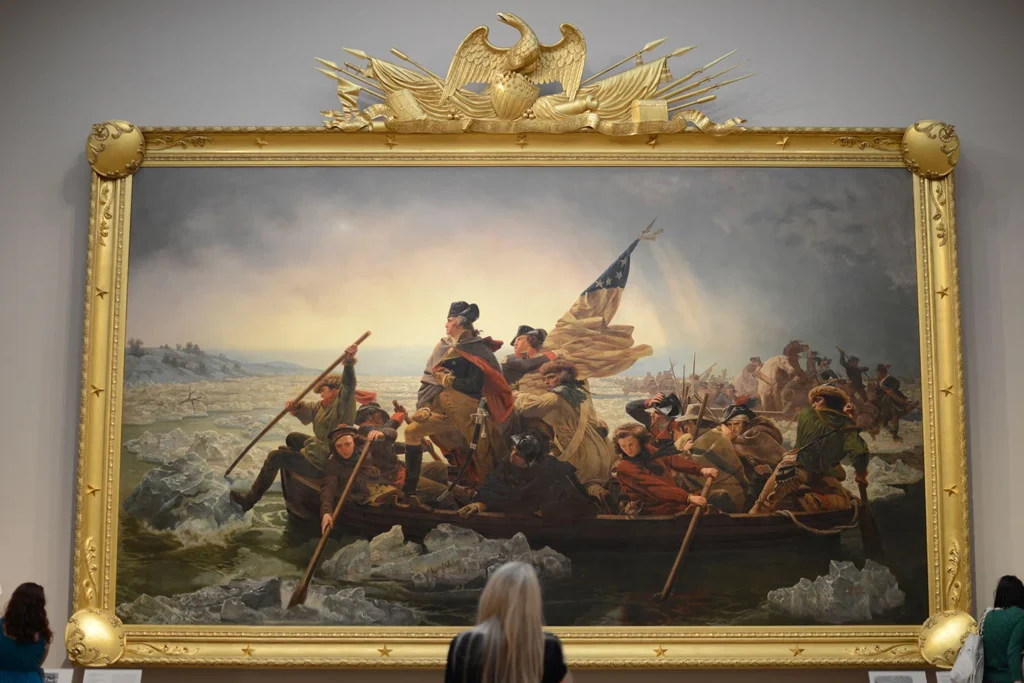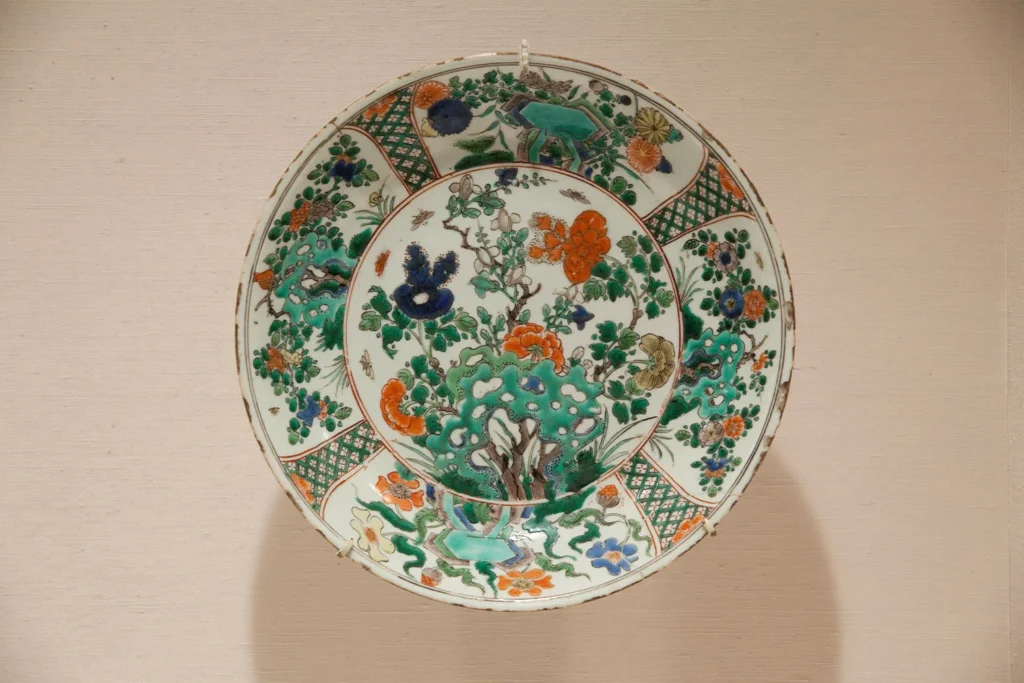Museums that attract even those who typically avoid displays of artifacts can be counted on one hand. The Metropolitan Museum of Art in New York is definitely one of them.
The Metropolitan Museum of Art (commonly known as The Met) is the oldest and one of the largest museums in the United States. Located on the eastern edge of Central Park, its massive structure is impossible to miss while strolling down the famous Fifth Avenue. This institution not only showcases American craftsmanship but also masterpieces created on all six continents, making it a mix of art that you won’t want to miss.
A Brief History of The Metropolitan Museum of Art
The history of this extraordinary institution is relatively ordinary. The Metropolitan Museum of Art was founded in 1870 by a group of American businessmen and artists who aimed to create a museum that would bring art closer to Americans and provide them with artistic education. The foundation of today’s impressive Met collection began with three private collections, consisting of 174 paintings, including works by renowned Dutch and Flemish artists such as Frans Hals and Anthony van Dyck. The collection steadily grew throughout the 19th century, but it was in the 20th century that The Met acquired world-renowned works of immense value, cementing its status as one of the largest art centers in the world.
The Metropolitan Museum of Art established its current home in Central Park in 1880. Since then, the original Gothic-Renaissance building has undergone significant expansions and slight modifications. The present facade and entrance along Fifth Avenue were completed in 1926, while the full architectural plan of the museum as we know it today wasn’t finished until 1991. Although the major construction work concluded in the late 20th century, the museum continually seeks to improve and reorganize its spaces to offer visitors the best possible experience.
Collections and Masterpieces
In the renowned halls of the Metropolitan Museum of Art, visitors can marvel at temporary exhibitions that address contemporary social issues, present a broad view of global art, and explore diverse forms of artistic expression. The museum also regularly organizes thematic tours, focusing on specific motifs and offering insight into the history of the museum’s most notable exhibits. (You can find interesting themed tours on this site as well). However, without a doubt, the greatest treasures of The Met are the pieces that form its permanent collection, comprising over a million works and guiding visitors on a captivating journey through 5,000 years of world history.
The American Wing
From its inception, the Metropolitan Museum of Art has housed significant examples of American art. As a result, in 1924, a separate wing of the building was dedicated to showcasing American artwork from the 17th to the early 19th century. This wing displays everything from early colonial paintings to decorative arts, reflecting the evolution of American artistic identity.

Moving through this section of the museum, you’ll find galleries filled with paintings, sculptures, furniture, and exquisite woodwork, glass, and silverware. A notable part of the collection also showcases the continuity of artistic ceramics in the United States from 1876 to 1956. A particularly unique and culturally significant collection is the one dedicated to baseball cards, featuring players from legendary teams like the New York Yankees and New York Giants.
European Paintings
The world-famous European painting collection at The Met features works spanning from the 13th to the 19th century. The walls are adorned not only with iconic masterpieces by renowned artists such as Caravaggio and Seurat, but also with unparalleled collections. The Met boasts the largest collection of 17th-century Dutch art in the Western Hemisphere, the most impressive representation of El Greco and Goya outside Spain, and the second most extensive survey of French painting from Neoclassicism to Post-Impressionism—second only to Paris. In this section, visitors are often drawn to some of the most celebrated works, such as “Self-Portrait with a Straw Hat” by Vincent van Gogh, “The Card Players” by Paul Cézanne, “The Harvesters” by Pieter Bruegel, and “The Dance Class” by Edgar Degas.
Art from Around the World
The pride of The Metropolitan Museum is not just its American and European treasures. Its halls are filled with art from virtually every corner of the globe. Masterpieces dating from the 3rd millennium BCE to the 21st century represent numerous Asian civilizations, while discoveries from Mesopotamia and the Eurasian steppes showcase the rich heritage of ancient Near Eastern art. A stroll through the museum also offers a chance to explore religious and secular objects, reflecting the diversity and cultural traditions of the Islamic world.

The museum’s Egyptian art collection is a testament to the West’s enduring fascination with this ancient culture. Among the artifacts, you’ll find Egyptian mummies and sarcophagi, but the most spectacular is the Temple of Dendur, an Egyptian structure from the 20th century BCE. The museum journey will also take you into the realms of other ancient civilizations. The Greek and Roman art department is one of the most comprehensive in North America and will certainly captivate enthusiasts of these classical cultures.
The Michael C. Rockefeller Wing
This wing, named in honor of Michael C. Rockefeller, the son of former U.S. Vice President Nelson Rockefeller (1974-1977), houses an extraordinary collection of art from Sub-Saharan Africa, the Pacific Islands, and pre-Columbian cultures of Central and South America. Visitors can explore the history and traditions of these peoples through decorative and ceremonial objects, sculptures, depictions of gods, and artifacts made from gold, ceramics, and stone. This wing is sure to capture your imagination with its collection of over 11,000 works, representing cultural traditions from 3000 BCE to the modern era.
Arms and Armor
From the dawn of history, weapons and armor played a critical role not only in conquest and defense but also in showcasing the artistic and technical prowess of various societies. A visit to The Metropolitan Museum of Art offers a unique chance to admire some of the finest examples of historical weaponry. The exhibition includes Japanese daggers, samurai armor, intricately decorated European firearms, crossbows, and ceremonial swords. One particularly notable piece is the last royal armor made in Europe, crafted in 1712 for the five-year-old Luis, Prince of Asturias, the heir to the Spanish throne.
Modern and Contemporary Art
This area, dedicated to the exploration, collection, and promotion of art from 1890 to the present, is perfect for those who appreciate less classical forms of art. Originally focused on Western European and North American art, the collection has expanded since 2012 to include acquisitions from Latin America, South Asia, the Middle East, North Africa, and Turkey. The works on display range from paintings and sculptures to works on paper, design, and decorative arts.
Medieval Art
The Metropolitan Museum is also home to one of the most comprehensive collections of medieval and Byzantine art in the world. If you’re interested in Mediterranean and European art from the 4th to the early 16th centuries, this section is a must-visit. The gallery, designed to resemble the interior of a church, features large medieval sculptures, altarpieces, tapestries, and furniture. The collection also includes European treasures from the Bronze Age and the early Iron Age.
Other Collections
You’ve already explored a significant part of the Metropolitan Museum of Art’s collection, but there’s still more to discover. A less obvious but equally fascinating part of the museum’s treasures includes 5,000 instruments gathered from all six continents, as well as an impressive collection of fashion for women, men, and children, spanning from the 15th century to the present day. You’ll also find photographs of artistic and historical importance, drawings, as well as European furniture, decorative arts, and tableware.
Visiting the Metropolitan Museum of Art
With over one million objects on display, you can imagine that exploring all of the museum’s treasures will require some time. However, there’s no need to worry about getting tired as you can take a break at one of the museum’s restaurants, bars, or cafés.

To avoid long lines at the ticket counters, it’s best to purchase tickets online in advance. You can explore the museum independently, but there’s also the option to join a guided tour for a more detailed experience. After visiting the exhibit halls, make sure to head to the rooftop terrace where you’ll find a bar and a stunning view of Central Park and the New York City skyline.
The Met Cloisters
Many visitors forget that the Metropolitan Museum of Art’s collection extends beyond Fifth Avenue. The Met Cloisters, located in Fort Tryon Park in Upper Manhattan, is another branch of the museum dedicated entirely to the art, architecture, and gardens of medieval Europe. It’s definitely worth a visit, especially since admission to both locations on the same day is included with the purchase of a main Met ticket.

The name The Cloisters comes from the medieval cloister at the heart of the building’s design. This unique museum will captivate you with its architectural structure and thousands of medieval artworks. Surrounding the cloisters, you can explore a Gothic chapel, a Glass Gallery, and a treasury filled with sculptures, manuscripts, and goldsmithing works. On the second floor, you’ll find rooms full of tapestries, Gothic sculptures, and frescoes that bring the medieval world to life.
Practical information
- It is best to purchase tickets for the Metropolitan Museum of Art in advance. This way, you can avoid standing in long lines and reduce the risk of tickets being sold out.
- Address: 1000 5th Ave, New York, NY 10028, United States
- Buy tickets on GetYourGuide